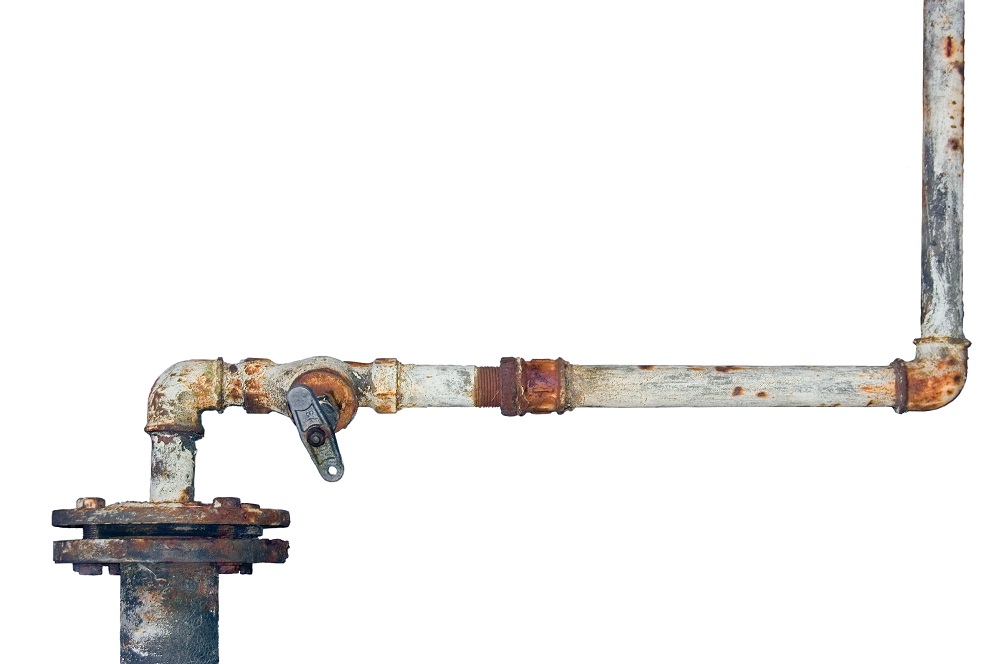
Though many homes are currently being constructed using PEX, PVC, and other types of plastic piping for residential water supplies, there is still a great deal of copper plumbing in service. Since the 1960s, copper piping has been the standard for water lines because of its beneficial qualities such as ease of bending, ready availability, and durability. However, ask anyone who has performed many home inspections, and you’ll learn that one common issue with copper pipes is corrosion.
One of the household systems a qualified inspector will check during a home inspection in Philadelphia is the plumbing, and it’s not uncommon to find evidence of corrosion in copper pipes. Corrosion can happen for many reasons. However, no matter its cause, when copper corrosion is discovered during a residential inspection, it must be repaired immediately to prevent further damage to surrounding structures. Keep reading to learn about a few of the common causes of corrosion within the home.
The relative acidity or alkalinity of water is rated using the pH scale. Substances with a low pH are considered acidic, while a high pH means that the substance is more alkaline. Neutral pH is considered 7, but the scale goes from 0 to 14. Water that has a low pH can lead to corrosion in copper pipes because it dissolves the protective copper oxide layer that forms inside the pipes in the presence of alkaline water. That layer of copper oxide protects the pipe and prevents oxidation, and when it isn’t present, corrosion is accelerated. That can lead to an eventual pinhole leak in your plumbing that can wreak havoc on utility bills and surrounding structures.
The water that is in your plumbing has fluctuating levels of dissolved gases, one of which is oxygen. When the temperature of the water is higher, there is usually more oxygen present. How does this impact corrosion? Oxygen must be present for oxidation, or rust, to occur in copper pipes. Therefore, the more oxygen that’s present in the water, the faster rust will develop. Once it begins to coat the inside of the copper piping, it can eat away at the thickness of the pipe walls until they become compromised and more susceptible to leaks or breakage.
Copper is an excellent conductor of electricity, which is why it’s the primary element used in electrical wiring. It’s always ever-present in the household environment in walls, floors, and the ground between the home and the water meter. Those two dynamics can create a problem when copper piping is exposed to electricity or even a weak galvanic field. For example, if lightning strikes the ground near a copper supply line, it could result in immediate corrosion and a pinhole leak. Sometimes people ground appliances to copper pipes, which provide an electrical trickle that can lead to a galvanic reaction and accelerated corrosion over time.
 Just as water with a low pH can impact corrosion in copper, high pH water that is full of dissolved solids can also instigate corrosion by a different mechanism. When water is alkaline or hard, which means impregnated with dissolved minerals such as calcium, sulfates, or salts, those substances precipitate out and adhere to the inside lining of the copper pipe. That factor alone doesn’t promote corrosion, but if corrosion-promoting bacteria become embedded in that mineral scale, a phenomenon known as microbiologically induced corrosion can occur.
Just as water with a low pH can impact corrosion in copper, high pH water that is full of dissolved solids can also instigate corrosion by a different mechanism. When water is alkaline or hard, which means impregnated with dissolved minerals such as calcium, sulfates, or salts, those substances precipitate out and adhere to the inside lining of the copper pipe. That factor alone doesn’t promote corrosion, but if corrosion-promoting bacteria become embedded in that mineral scale, a phenomenon known as microbiologically induced corrosion can occur.
If a recent home inspection has uncovered corrosion of copper piping in your home, you must first determine the cause of the corrosion and take steps to remedy it immediately. Failure to confront corrosion can be costly in terms of repair expense and inconvenience that results from failed plumbing. To learn more about the causes of corrosion in your home to schedule a residential inspection in Philadelphia, PA, contact Eagle Inspections at (267) 538-2292.